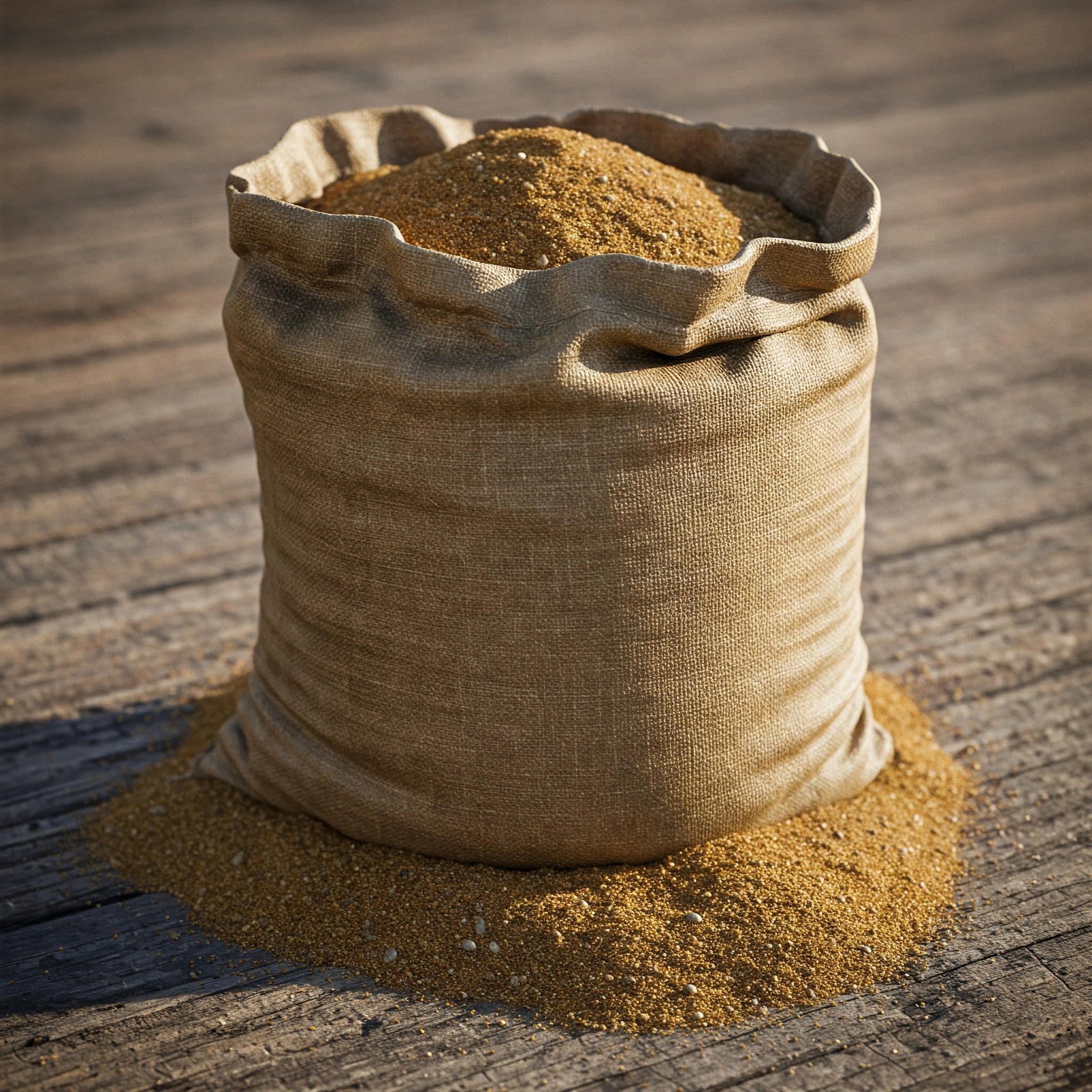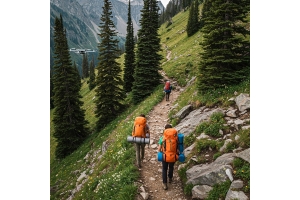
Alright, settle in. Hope you took that ruck march advice to heart, because today we're talking about another cornerstone of real-world, functional fitness – the kind that makes you useful when things get tough. Forget the chrome machines and fancy gyms for a minute. We're going old school, we're going gritty, we're talking about the Sandbag.
Yeah, a bag of sand. Doesn't sound like much, but trust me on this, after years in the service and seeing what works, this humble piece of gear is one of the most effective tools you can have in your arsenal for building the kind of strength that matters. The kind that keeps you prepared and resilient.
What's So Special About a Bag of Sand?
Why swap a perfectly balanced barbell for a lumpy, shifting bag? Because life isn't perfectly balanced. Tactical fitness isn't just about lifting heavy weight in a straight line; it's about grappling with awkward objects, stabilizing under load, and generating power from weird positions. That's where the sandbag shines:
- Awkward & Unstable Load: This is the magic. The sand shifts inside the bag with every movement. Your body has to constantly recruit stabilizer muscles – deep in your core, shoulders, hips, and back – to control it. This mimics carrying gear, assisting a casualty, or wrestling with equipment far better than a rigid weight does.
- Builds Crushing Grip Strength: You can't easily use straps with a sandbag. You have to grip it, often in unconventional ways. This builds serious hand, wrist, and forearm strength crucial for almost any physical task.
- Develops Real-World Core Strength: Forget endless crunches. Picking up, carrying, pressing, and squatting a shifting sandbag forces your entire core to work overtime to keep your spine stable and transfer force.
- Incredibly Versatile: You can lift it, carry it, press it, pull it, throw it (carefully!). Cleans, squats, lunges, presses, rows, carries – one bag unlocks dozens of exercises.
- Affordable & Accessible: You don't need a $2000 home gym. A good quality sandbag shell and some filler bags are relatively inexpensive. Heck, you can even DIY one with a sturdy duffel or surplus bag and contractor bags filled with sand (though purpose-built ones last longer and are generally safer). Check out options online – maybe even swing by GearSwap.shop, we sometimes get good ones in stock.
- Mental Toughness: Wrestling with an unwieldy, heavy bag that doesn't want to cooperate builds grit. There's no easy way, you just have to get it done.
Getting Started: Handle with Care
Just like with rucking, don't be a hero on day one. Sandbag weight feels different and often heavier than the equivalent barbell weight because of the instability.
- The Bag: Get a quality bag designed for training if possible. Look for strong stitching, durable material (like Cordura), and reliable closures. If DIY-ing, double or triple bag the sand inside heavy-duty contractor bags before putting it in your outer bag (duffel, sea bag) to prevent leaks.
- The Weight: Start LIGHTER than you think. Seriously. For general fitness, maybe 30-50 lbs for men, 20-35 lbs for women to start. You can always add more sand later. Master the movements first. Pea gravel can be an alternative filler if sand isn't available.
- The Space: You need a durable floor or outdoor space. Garages, backyards, or parks work well. Dropping can happen (try not to!), so be mindful of the surface.
Fundamental Sandbag Exercises (Focus on Form!)
Keep it simple to start. Master these basic movements:
-
Sandbag Deadlift/Clean:
- Stand with feet shoulder-width apart, bag between your feet.
- Hinge at your hips, keep your back straight (neutral spine!), chest up. Grab the bag firmly.
- Drive through your heels, extending hips and knees powerfully to lift the bag.
- For a clean: As the bag passes your knees, explosively extend your hips (like a kettlebell swing), shrug, and pull the bag up towards your shoulders, rotating your elbows underneath to catch it in a "Zercher" hold (in the crook of your elbows) or across the top of your chest/shoulders.
- Lower under control WITH GOOD FORM. Reset for each rep initially. Protect your back!
-
Sandbag Front Squat (Zercher or Bear Hug):
- Clean the bag to the Zercher position (in the crook of your elbows, hugged tight to your chest) or Bear Hug it vertically against your chest.
- Feet shoulder-width apart, brace your core.
- Sit back and down, keeping your chest up and elbows high (if Zercher). Aim for thighs parallel to the ground or lower if mobility allows.
- Drive back up through your heels.
-
Sandbag Overhead Press:
- Clean the bag to your shoulders/upper chest.
- Feet shoulder-width apart, core tight, glutes squeezed.
- Press the bag straight overhead, keeping it close to your face. Fully extend your arms.
- Lower under control back to the shoulders. Avoid leaning back excessively.
-
Sandbag Bent-Over Row:
- Stand with feet shoulder-width apart, bag in front of you.
- Hinge at the hips, keeping your back straight (neutral spine!), until your torso is nearly parallel to the floor. Let the bag hang straight down.
- Pull the bag towards your chest, squeezing your shoulder blades together.
- Lower under control.
-
Sandbag Carry (Bear Hug, Shoulder, Zercher):
- Clean the bag safely into your chosen carry position (hugged tight, thrown over one shoulder, or in Zercher hold).
- Stand tall, core braced.
- Walk for a set distance (e.g., 50 feet) or time (e.g., 30-60 seconds). Keep posture strong.
- Carefully lower the bag.
Sample Beginner Sandbag Workout
After a good dynamic warm-up:
Circuit (3-4 Rounds):
- Sandbag Cleans: 6-8 reps
- Sandbag Front Squats: 8-10 reps
- Sandbag Overhead Press: 6-8 reps
- Sandbag Bent-Over Rows: 8-10 reps
- Sandbag Carry: 50 feet
Rest 60-90 seconds between rounds. Focus on QUALITY reps, not speed. Adjust reps/rounds based on your fitness level. Two rounds might be plenty to start. Cool down with static stretching.
Safety Brief:
- NEUTRAL SPINE: I can't say this enough. Protect your back, especially when lifting from the ground.
- FORM OVER WEIGHT: Master the movement before adding more sand.
- CONTROL: Don't just throw the weight around wildly, especially overhead. Lower it under control.
- LISTEN TO YOUR BODY: If something feels sharp or wrong, stop.
The Takeaway:
Sandbag training isn't pretty, but it builds rugged, functional strength and resilience that translates directly to overcoming physical challenges. It's simple, effective, and builds mental grit. Incorporate it into your routine, start smart, stay consistent, and you'll develop a level of preparedness that serves you well on duty and in life.
Now go find a bag and get to work. Stay Frosty.







